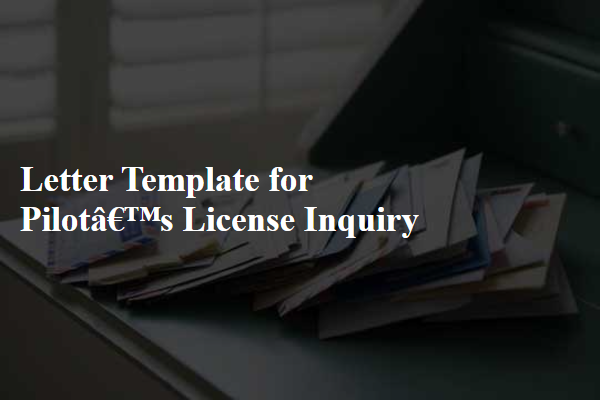Are you looking to make a seamless transition with your license transfer? Writing a clear and concise request letter is key to ensuring your needs are met efficiently. In this article, we will guide you through the essential components of a license transfer request letter and provide you with a practical template to follow. Ready to simplify your license transfer process? Let's dive in!

Clear identification of parties involved
A formal license transfer request entails specific details to ensure clarity in the identification of involved parties. The request should include the full legal names of the original license holder (often an individual or a company), alongside their contact information, such as addresses, phone numbers, and email addresses. The potential new license holder's information should be presented equally, reflecting their full name, legal entity status, contact details, and any relevant identification numbers associated with them, such as business registration numbers or tax IDs. Additionally, the current license number, along with effective dates, should be documented to provide a clear reference for the license being transferred, minimizing any potential confusion in processing the request.
Specific details of the license being transferred
A license transfer request often involves specific details about the license being transferred, such as the license number (e.g., LI123456), the type of license (e.g., professional services license), and the issuing authority (e.g., State Licensing Board). This request should also include the names of the current license holder and the new license holder, along with any relevant identification numbers (e.g., Social Security Number, Tax Identification Number) for processing purposes. Furthermore, important dates, such as the original issuance date (e.g., January 1, 2020) and the transfer request date, should be noted to provide a clear timeline for the transfer process. Attachments may include proof of identity for both parties and any necessary forms required by the issuing authority to facilitate a smooth transfer.
Reason for the transfer
A license transfer request often arises from changing ownership, such as a business acquisition or personal shift, like relocating to a different country. In cases of selling a business, the new owner must retain the necessary licenses to operate legally, ensuring compliance with local regulations. For individuals moving to a new location, transferring licenses ensures that professional qualifications are recognized in the new jurisdiction. This process is critical for maintaining regulatory standards, safeguarding public interests, and facilitating smooth transitions in various professional fields. The specific reason for the transfer must be clearly outlined to ensure a transparent and streamlined process.
Terms and conditions acknowledgment
The acknowledgment of terms and conditions is a crucial step in the license transfer process. When a user seeks to transfer a license, it is mandatory for them to fully understand and agree to the specific terms outlined by the issuing authority, such as a company policy or legal guidelines. The terms often include user obligations, usage limitations, and any transfer fees applicable to the license type, such as software licenses or business permits. It is essential to ensure all parties involved are aware of the implications of the transfer, including potential liabilities and responsibilities related to the license. Proper documentation should reflect all agreements reached, including consent signatures from both the transferring and receiving parties, to formalize the transfer. This procedure helps maintain compliance with regulatory requirements and protects the rights of both entities involved in the license transaction.
Contact information for follow-up and confirmation
A license transfer request requires precise information for seamless communication and confirmation. The primary contact person should include their full name, designated title (such as License Holder or Project Manager), and an email address for electronic correspondence. A phone number, ideally with area code, ensures direct follow-up, facilitating any necessary discussions regarding the transfer process. Additionally, providing a mailing address, inclusive of street, city, state, and zip code, is crucial for any formal documentation that may need to be sent physically. These details guarantee that all parties remain informed and engaged throughout the license transfer proceedings.
Letter Template For License Transfer Request Samples
Letter template of license transfer request for professional certification

Letter template of license transfer request for real estate transactions












Comments